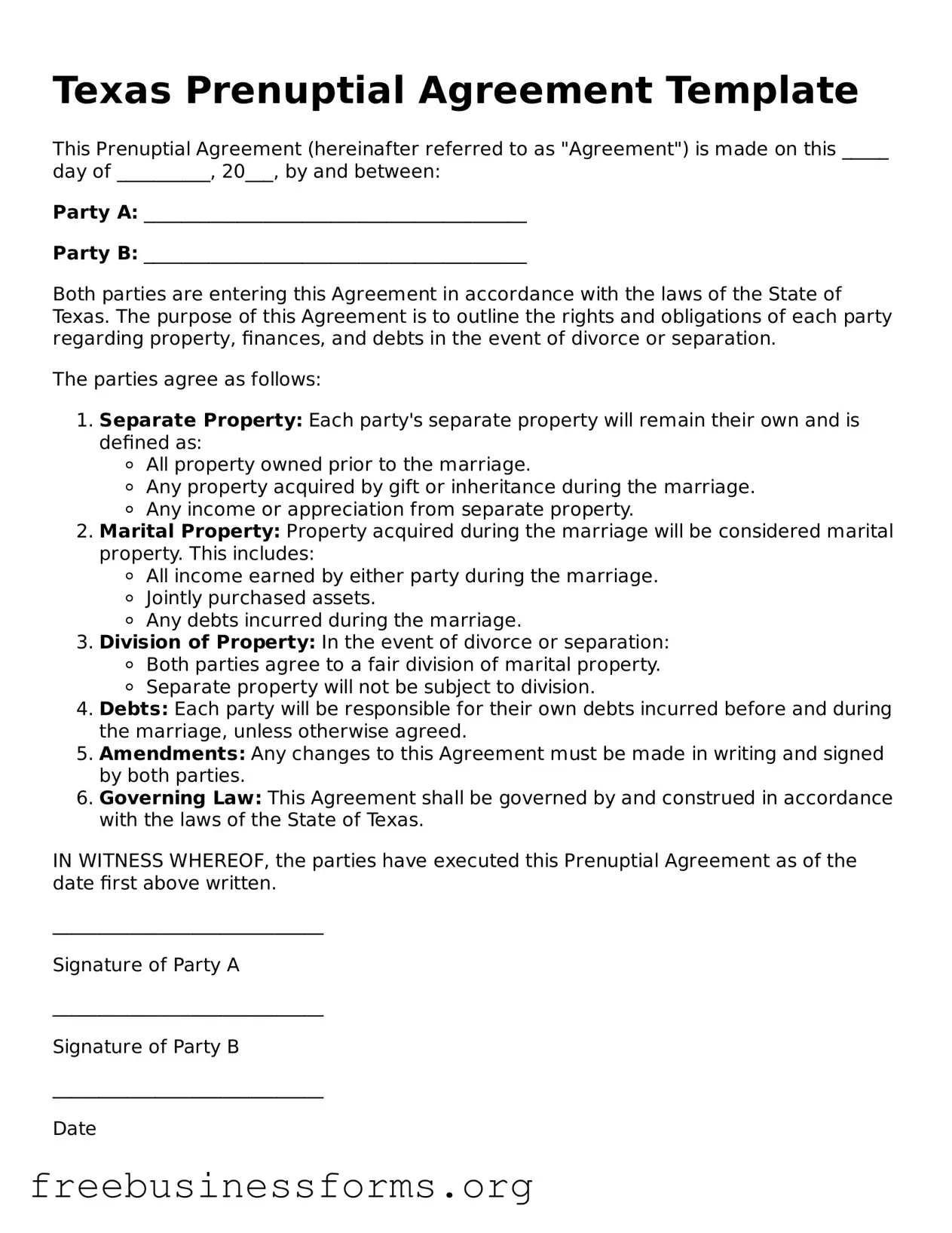Texas Prenuptial Agreement Template
This Prenuptial Agreement (hereinafter referred to as "Agreement") is made on this _____ day of __________, 20___, by and between:
Party A: _________________________________________
Party B: _________________________________________
Both parties are entering this Agreement in accordance with the laws of the State of Texas. The purpose of this Agreement is to outline the rights and obligations of each party regarding property, finances, and debts in the event of divorce or separation.
The parties agree as follows:
- Separate Property: Each party's separate property will remain their own and is defined as:
- All property owned prior to the marriage.
- Any property acquired by gift or inheritance during the marriage.
- Any income or appreciation from separate property.
- Marital Property: Property acquired during the marriage will be considered marital property. This includes:
- All income earned by either party during the marriage.
- Jointly purchased assets.
- Any debts incurred during the marriage.
- Division of Property: In the event of divorce or separation:
- Both parties agree to a fair division of marital property.
- Separate property will not be subject to division.
- Debts: Each party will be responsible for their own debts incurred before and during the marriage, unless otherwise agreed.
- Amendments: Any changes to this Agreement must be made in writing and signed by both parties.
- Governing Law: This Agreement shall be governed by and construed in accordance with the laws of the State of Texas.
IN WITNESS WHEREOF, the parties have executed this Prenuptial Agreement as of the date first above written.
_____________________________
Signature of Party A
_____________________________
Signature of Party B
_____________________________
Date
This Agreement is not intended to replace legal advice. Consult an attorney for specific guidance tailored to your situation.
